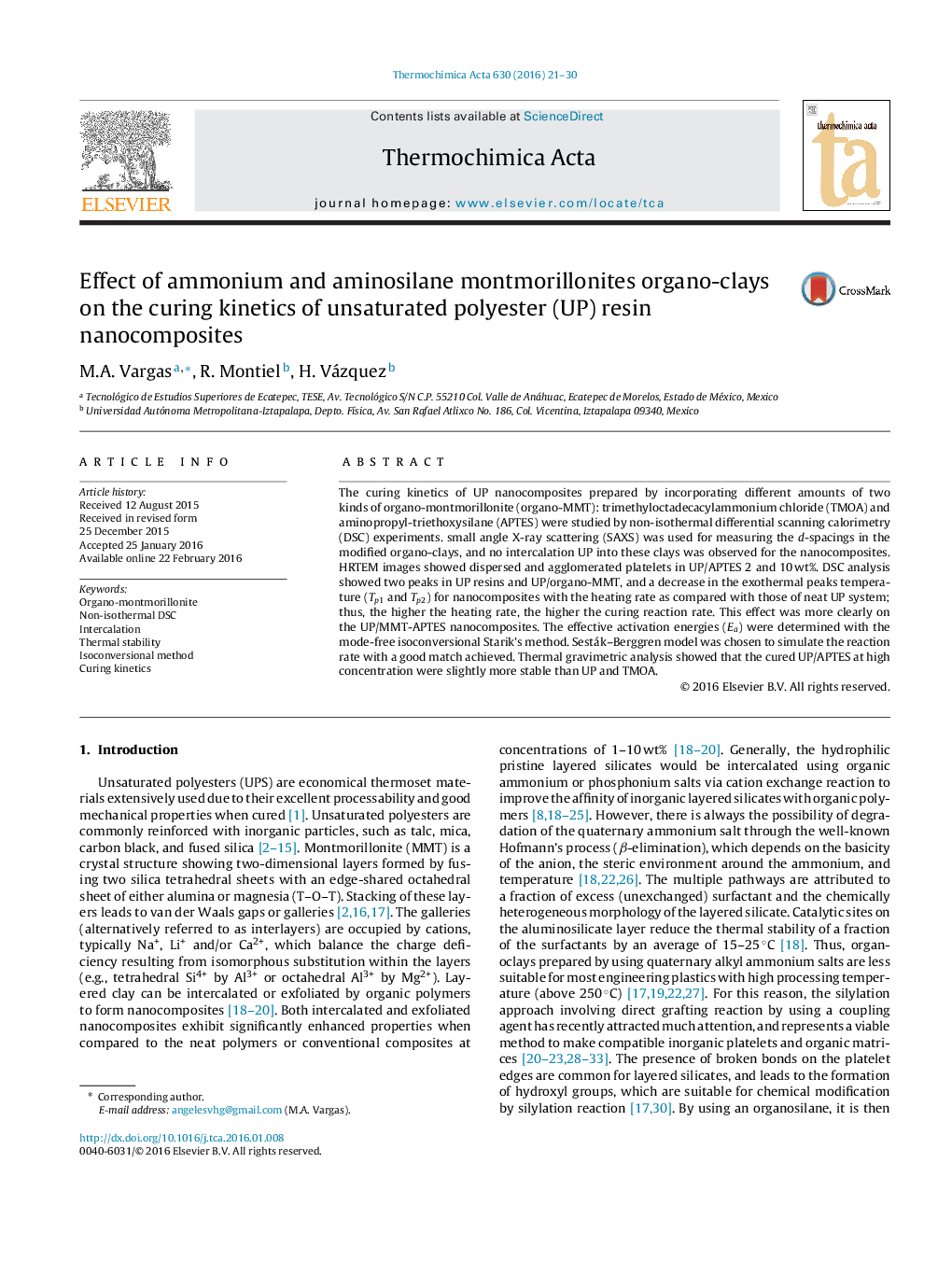| Article ID | Journal | Published Year | Pages | File Type |
|---|---|---|---|---|
| 672712 | Thermochimica Acta | 2016 | 10 Pages |
Abstract
The curing kinetics of UP nanocomposites prepared by incorporating different amounts of two kinds of organo-montmorillonite (organo-MMT): trimethyloctadecacylammonium chloride (TMOA) and aminopropyl-triethoxysilane (APTES) were studied by non-isothermal differential scanning calorimetry (DSC) experiments. small angle X-ray scattering (SAXS) was used for measuring the d-spacings in the modified organo-clays, and no intercalation UP into these clays was observed for the nanocomposites. HRTEM images showed dispersed and agglomerated platelets in UP/APTES 2 and 10Â wt%. DSC analysis showed two peaks in UP resins and UP/organo-MMT, and a decrease in the exothermal peaks temperature (Tp1 and Tp2) for nanocomposites with the heating rate as compared with those of neat UP system; thus, the higher the heating rate, the higher the curing reaction rate. This effect was more clearly on the UP/MMT-APTES nanocomposites. The effective activation energies (Ea) were determined with the mode-free isoconversional Starik's method. Sesták-Berggren model was chosen to simulate the reaction rate with a good match achieved. Thermal gravimetric analysis showed that the cured UP/APTES at high concentration were slightly more stable than UP and TMOA.
Keywords
Related Topics
Physical Sciences and Engineering
Chemical Engineering
Fluid Flow and Transfer Processes
Authors
M.A. Vargas, R. Montiel, H. Vázquez,
